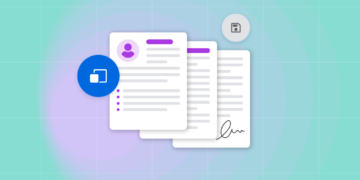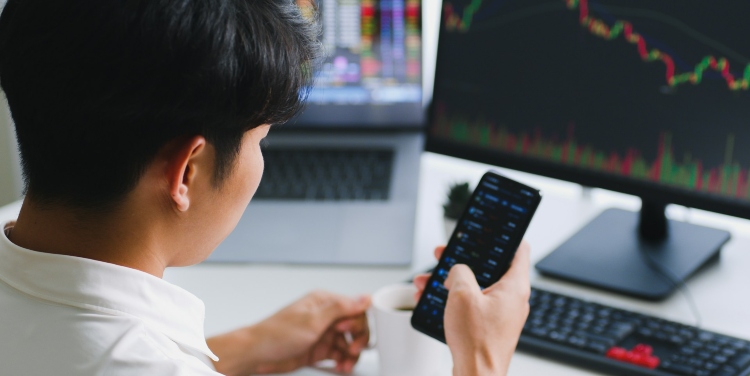Discover the power of leverage in trading with our top tips for maximizing gains while minimizing risks. Understanding how to wield leverage effectively can transform your trading strategy, offering amplified opportunities in volatile markets. One game-changing tip could be choosing investment education to stay updated! You can find more info here about starting with investment education.
- Choosing the Right Leverage Ratio
Choosing the right leverage ratio is crucial in trading as it directly impacts both potential returns and risks. Leverage allows traders to control larger positions with a smaller amount of capital, amplifying both profits and losses. Common leverage ratios include 2:1, 5:1, and 10:1, indicating how much more exposure a trader has compared to their initial investment.
The optimal leverage ratio varies based on several factors, including risk tolerance, trading strategy, and market conditions. A lower leverage ratio, such as 2:1, offers more conservative exposure, limiting potential losses but also capping potential gains. On the other hand, higher leverage ratios like 10:1 provide greater profit potential but also increase the risk of significant losses if the trade moves against expectations.
To determine the right leverage ratio, traders should assess their risk appetite and understand the volatility of the assets they are trading. Conservative traders may prefer lower leverage to minimize risk, while more aggressive traders may opt for higher leverage to capitalize on short-term market movements.
- Risk Management Strategies with Leverage
Effective risk management is paramount when using leverage in trading to protect capital and minimize losses. Leverage amplifies both profits and losses, making risk management strategies essential for long-term success.
One of the fundamental risk management tools is setting stop-loss orders. A stop-loss order specifies a price at which a trade will automatically be closed, limiting the amount of loss incurred on a trade. Traders should set stop-loss levels based on technical analysis, support and resistance levels, or predefined risk tolerance levels.
Diversification is another critical strategy in leveraged trading. By diversifying across different assets or markets, traders can reduce the impact of adverse price movements on their overall portfolio. Diversification helps spread risk and can mitigate losses from a single asset or sector performing poorly.
- Understanding Margin Requirements
Margin requirements play a crucial role in leveraged trading, determining the amount of capital a trader must maintain in their account to support open positions. Initial margin is the minimum amount of funds required to enter into a leveraged position, typically expressed as a percentage of the total position size.
Maintenance margin refers to the minimum account balance required to keep a leveraged position open. If the value of the trader’s equity falls below the maintenance margin level due to adverse price movements, the broker may issue a margin call. A margin call requires the trader to deposit additional funds into their account to restore the minimum margin level or risk having their positions liquidated to cover losses.
Understanding and managing margin requirements are essential for traders to avoid margin calls and potential liquidation. Traders should always monitor their account balances and the value of their leveraged positions relative to margin requirements. By maintaining adequate margin levels and planning for potential margin calls, traders can mitigate the risks associated with leveraged trading and protect their capital.
- Market Analysis and Timing
Effective market analysis and timing are critical when using leverage in trading to capitalize on opportunities and mitigate risks. Leveraged trading magnifies both potential gains and losses, making it essential for traders to make informed decisions based on thorough market analysis.
Technical analysis involves studying historical price charts and using mathematical indicators to forecast future price movements. Traders analyze trends, support and resistance levels, and trading volumes to identify entry and exit points for leveraged positions. Technical analysis helps traders make objective decisions based on market data rather than emotions.
Fundamental analysis focuses on evaluating the underlying factors that affect the value of an asset, such as economic indicators, company financials, and geopolitical events. Traders using fundamental analysis assess the intrinsic value of assets to determine whether they are overvalued or undervalued in the market.
- Psychological Preparation for Leveraged Trading
Psychological preparation is vital for traders using leverage to manage the amplified risks and potential rewards effectively. Leveraged trading can evoke strong emotions such as fear, greed, and anxiety, which can cloud judgment and lead to impulsive decision-making.
One of the key psychological challenges in leveraged trading is managing emotions during periods of market volatility. Price fluctuations in leveraged positions can cause rapid changes in account balances, triggering fear or excitement. Traders should cultivate emotional resilience and discipline to avoid making rash decisions based on short-term market movements.
Discipline is essential for maintaining a consistent trading strategy and adhering to risk management rules. Traders should establish clear trading plans with predefined entry and exit points, stop-loss levels, and profit targets. By following a disciplined approach, traders can reduce emotional influence on their trading decisions and improve their overall performance.
Conclusion
Mastering leverage requires strategic finesse and disciplined execution. By implementing our proven tips—ranging from choosing the right ratio to mastering risk management and psychological resilience—you can navigate leveraged trading with confidence. Start applying these insights today to elevate your trading prowess and achieve consistent success.
David Prior
David Prior is the editor of Today News, responsible for the overall editorial strategy. He is an NCTJ-qualified journalist with over 20 years’ experience, and is also editor of the award-winning hyperlocal news title Altrincham Today. His LinkedIn profile is here.














































































